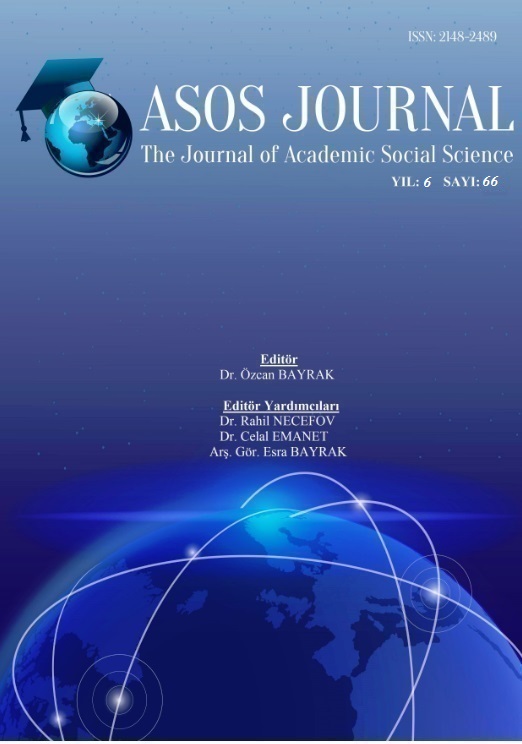Author :
Abstract
Herta Müller’in Çavuşesku dönemine ışık tuttuğu “Yürekteki Hayvan” romanı, bir arkadaş grubunun söz konusu dönemde gündelik hayatta yaşadıkları rejim baskısını konu edinir. Ancak roman, sadece içeriği ile değil Müller’in anlatım biçimi ile de sıradışı bir kurgu dünyasının kapılarını açar. Yazarın figürleri donatma/tanıtma biçimi, hem dikkat çekici hem de romanın genel kurgusunu netleştirmesi açısından oldukça bilinçli bir yaklaşımdır. Müller, kurgusal anlamda yapıtlarını planlarken geçmişle hesaplaşmaya/geçmişi unutturmamaya odaklanır. Onun bu odak noktası, gerçeklik-kurmaca ilişkisi bağlamında oldukça doğal bir sonuç olarak değerlendirilebilir. Söz konusu romanda da ön plana çektiği anlatıcı ile Müller, Romanya’nın tarihsel panoramasını somutlaştırırken, patetik anlatım biçimi ile yaşanılanları okurun gözünde canlandırmasına olanak tanır. Romanda anlatıcının varlığı ve anlatım biçimi, totaliter rejimi/baskıyı vurgulu bir biçimde hissettirir ve en az içerik kadar romanın temel belirleyeni olarak karşımıza çıkar. Bu doğrultuda romanın içeriği, anlatı özellikleri ile birlikte netlik kazanır
Keywords
Abstract
Herta Müller's novel "The Land of the Green Plum", which illuminates the time of Ceausescu, focuses on the dictatorial pressure experienced by a group of friends in daily life. However, the novel opens the doors of an extraordinary fiction world not only with its content, but with Müller's narrative form. The way the author equips the figures is both remarkable and it is a very conscious approach in terms of clarifying the general fiction of the novel. Müller focuses on not forgetting the past and the reconciliation with the past, when planning her works in the fictional sense. This focal point of her can be considered as a very natural result in the context of reality-fiction relation. Müller focuses on the narrator, with whom she embodies Romania's historic panaromas and she gives the possibility with the form of the pathetic expression to concretize the experiences in the eyes of the reader. The narrator's existence and narrative style feels the totalitarian regime/pressure in the novel and thus, the content of the novel is at least adopted as the basis for the novel. In this direction, the content of the novel becomes clear with its narrative features.





